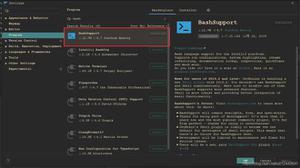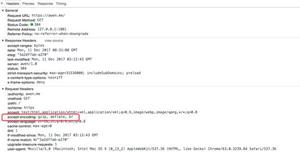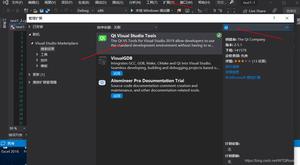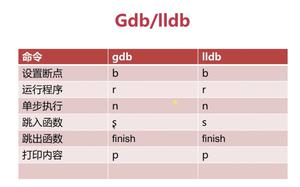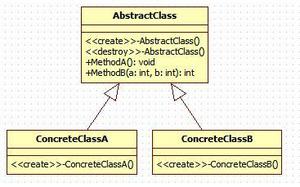使用DI和IoC的工厂方法
我熟悉这些模式,但仍然不知道如何处理以下情况:
public class CarFactory{
public CarFactory(Dep1,Dep2,Dep3,Dep4,Dep5,Dep6)
{
}
public ICar CreateCar(type)
{
switch(type)
{
case A:
return new Car1(Dep1,Dep2,Dep3);
break;
case B:
return new Car2(Dep4,Dep5,Dep6);
break;
}
}
}
通常,问题在于需要注入的引用数量。如果有更多的汽车,情况将会更糟。
我想到的第一种方法是在工厂构造函数中注入Car1和Car2,但是这与工厂方法相反,因为工厂将始终返回相同的对象。第二种方法是注入servicelocator,但是它到处都是反模式。怎么解决呢?
回答:
替代方法1:
public class CarFactory{
public CarFactory(IContainer container)
{
_container = container;
}
public ICar CreateCar(type)
{
switch(type)
{
case A:
return _container.Resolve<ICar1>();
break;
case B:
return _container.Resolve<ICar2>();
break;
}
}
}
替代方法2(由于树中过多的依赖关系而很难使用):
public class CarFactory{
public CarFactory()
{
}
public ICar CreateCar(type)
{
switch(type)
{
case A:
return new Car1(new Dep1(),new Dep2(new Dep683(),new Dep684()),....)
break;
case B:
return new Car2(new Dep4(),new Dep5(new Dep777(),new Dep684()),....)
break;
}
}
}
回答:
在工厂内部有一个switch case语句是一种代码味道。有趣的是,您似乎根本没有专注于解决该问题。
针对这种情况的最佳,最直接的DI解决方案是策略模式。它允许您的DI容器将依赖项注入到它们所属的工厂实例中,而不会使具有这些依赖项的其他类变得混乱,也不必诉诸服务定位器。
介面
public interface ICarFactory{
ICar CreateCar();
bool AppliesTo(Type type);
}
public interface ICarStrategy
{
ICar CreateCar(Type type);
}
工厂工厂
public class Car1Factory : ICarFactory{
private readonly IDep1 dep1;
private readonly IDep2 dep2;
private readonly IDep3 dep3;
public Car1Factory(IDep1 dep1, IDep2 dep2, IDep3 dep3)
{
if (dep1 == null)
throw new ArgumentNullException("dep1");
if (dep2 == null)
throw new ArgumentNullException("dep2");
if (dep3 == null)
throw new ArgumentNullException("dep3");
this.dep1 = dep1;
this.dep2 = dep2;
this.dep3 = dep3;
}
public ICar CreateCar()
{
return new Car1(this.dep1, this.dep2, this.dep3);
}
public bool AppliesTo(Type type)
{
return typeof(Car1).Equals(type);
}
}
public class Car2Factory : ICarFactory
{
private readonly IDep4 dep4;
private readonly IDep5 dep5;
private readonly IDep6 dep6;
public Car1Factory(IDep4 dep4, IDep5 dep5, IDep6 dep6)
{
if (dep4 == null)
throw new ArgumentNullException("dep4");
if (dep5 == null)
throw new ArgumentNullException("dep5");
if (dep6 == null)
throw new ArgumentNullException("dep6");
this.dep4 = dep4;
this.dep5 = dep5;
this.dep6 = dep6;
}
public ICar CreateCar()
{
return new Car2(this.dep4, this.dep5, this.dep6);
}
public bool AppliesTo(Type type)
{
return typeof(Car2).Equals(type);
}
}
战略
public class CarStrategy : ICarStrategy{
private readonly ICarFactory[] carFactories;
public CarStrategy(ICarFactory[] carFactories)
{
if (carFactories == null)
throw new ArgumentNullException("carFactories");
this.carFactories = carFactories;
}
public ICar CreateCar(Type type)
{
var carFactory = this.carFactories
.FirstOrDefault(factory => factory.AppliesTo(type));
if (carFactory == null)
{
throw new Exception("type not registered");
}
return carFactory.CreateCar();
}
}
用法
// I am showing this in code, but you would normally // do this with your DI container in your composition
// root, and the instance would be created by injecting
// it somewhere.
var strategy = new CarStrategy(new ICarFactory[] {
new Car1Factory(dep1, dep2, dep3),
new Car2Factory(dep4, dep5, dep6)
});
// And then once it is injected, you would simply do this.
// Note that you could use a magic string or some other
// data type as the parameter if you prefer.
var car1 = strategy.CreateCar(typeof(Car1));
var car2 = strategy.CreateCar(typeof(Car2));
请注意,由于没有switch
case语句,因此可以在不更改设计的情况下将其他工厂添加到策略中,并且这些工厂中的每个工厂都可以具有自己的依赖性,这些依赖性由DI容器注入。
var strategy = new CarStrategy(new ICarFactory[] { new Car1Factory(dep1, dep2, dep3),
new Car2Factory(dep4, dep5, dep6),
new Car3Factory(dep7, dep8, dep9)
});
var car1 = strategy.CreateCar(typeof(Car1));
var car2 = strategy.CreateCar(typeof(Car2));
var car3 = strategy.CreateCar(typeof(Car3));
以上是 使用DI和IoC的工厂方法 的全部内容, 来源链接: utcz.com/qa/397888.html

